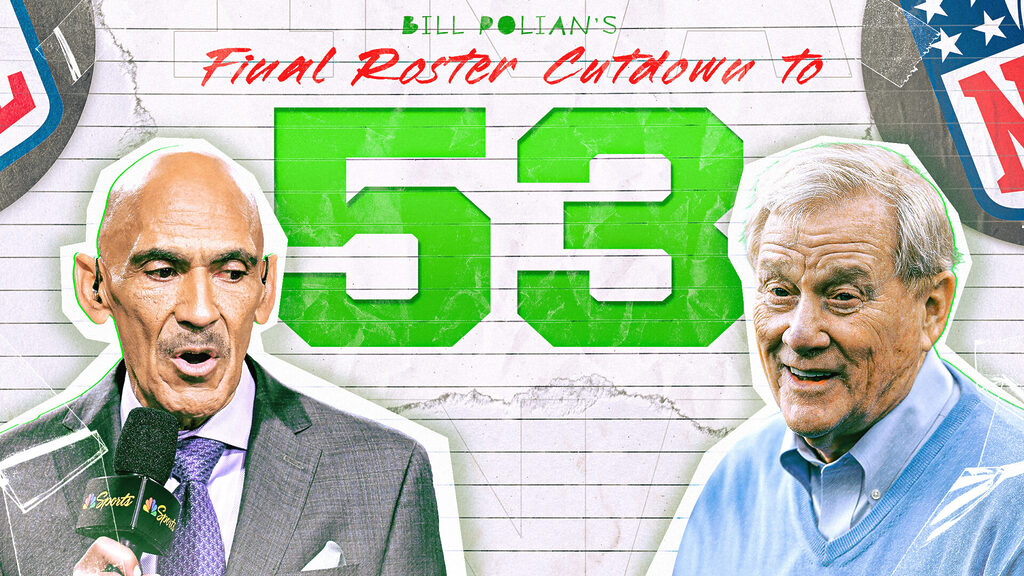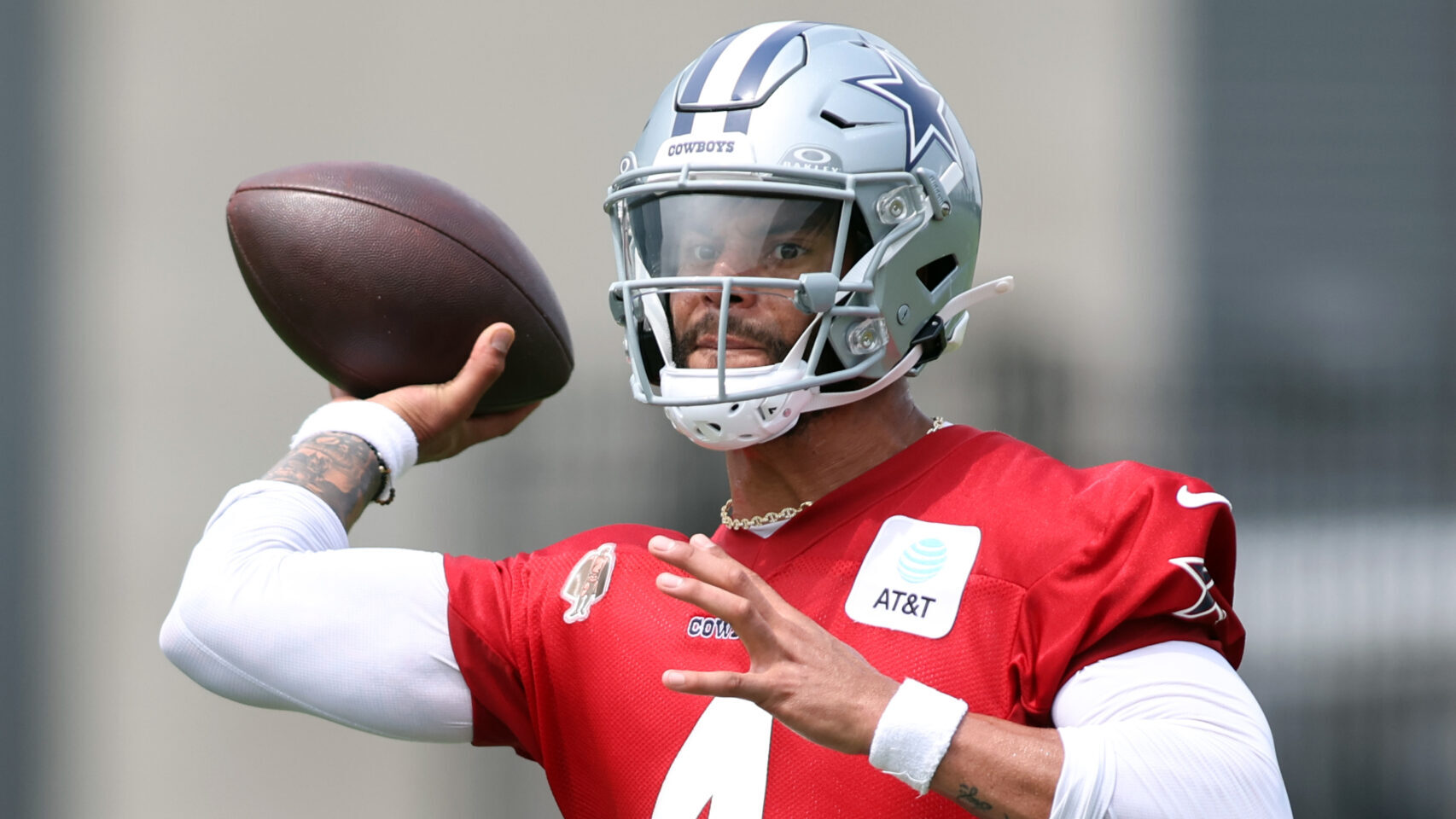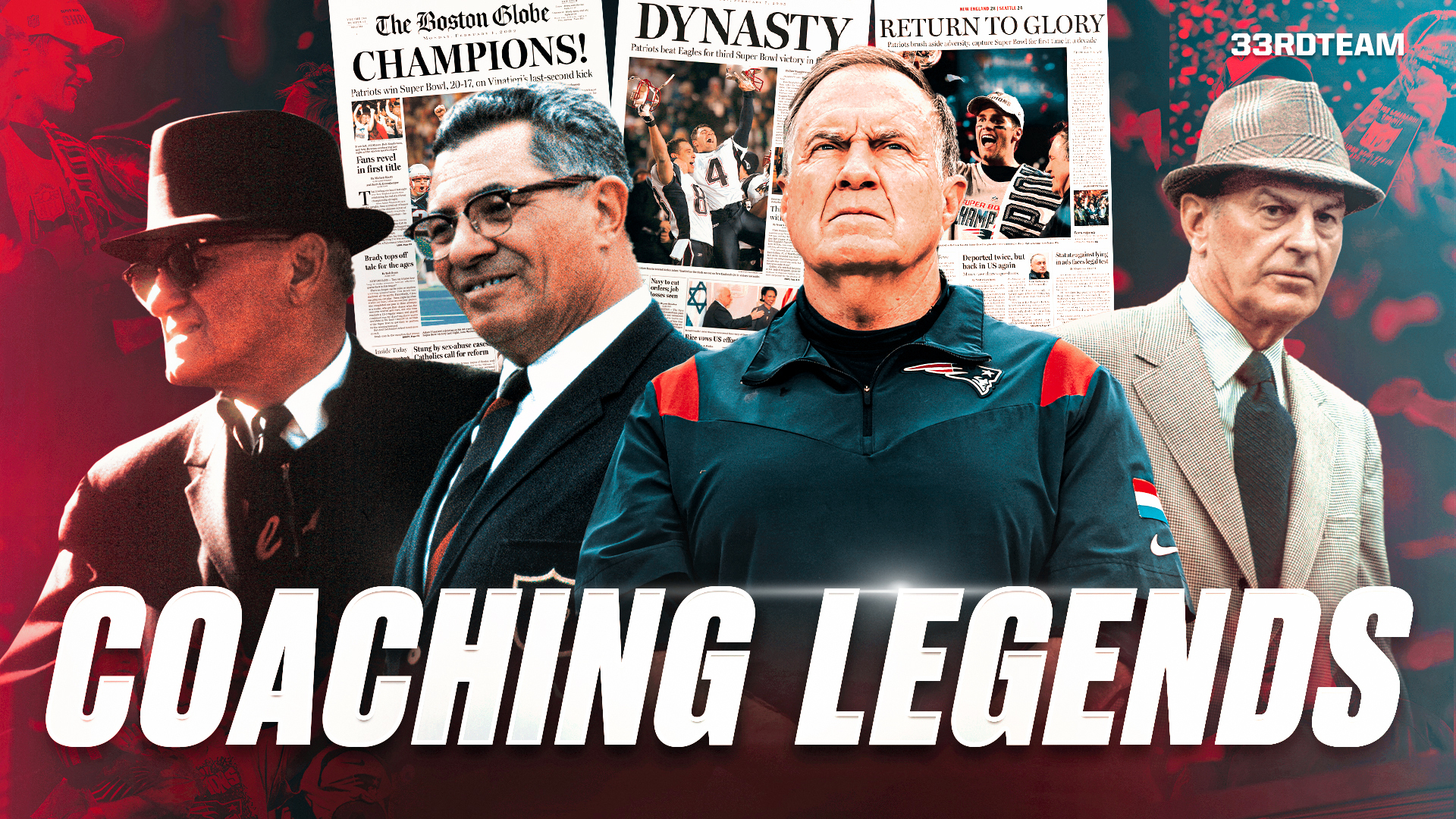Analysis
8/24/23
11 min read
Explaining the NFL's Final Roster Cut Process

For an NFL general manager and his staff, the last week of preseason games leading up to the formation of the opening-day roster is a hectic time.
Colloquially known as the “cut to 53” or “final cut,” it consists of a number of different personnel decisions dictated by somewhat complicated rules. The final cut occurs on Aug. 29 at noon ET. At that time, a club must reduce its active roster to 53 players. Teams do this by cutting players from the existing 90-man roster and placing certain qualified players on various restricted lists.
Without putting you through a graduate class on NFL roster management, we’ll highlight the most important definitions and restricted lists as they apply to this process.
Roster Cutdown Explained
Differentiating Players
There are two categories of players on every roster who have different rights under the collective bargaining agreement.
A vested veteran is a player with four or more years of NFL service. When a team cuts a vested veteran prior to the trading deadline in the regular season, he’s not subject to the waiver system. He becomes a free agent.
A player with fewer than four years of service, when cut at any time, is subject to the waiver system. This means any other team in the league could claim him. There is a claiming priority, which up until Week 3 of the regular season, is based on the previous year’s record.
It directly mirrors the order of the previous year’s draft. The team with the worst record has priority on any waived players, followed in reverse order of won-loss record by all others, with the Super Bowl champions last.
In short, if released at the final cut, vested veterans are free agents. All others are subject to waiver claims.
Using Restricted Lists
There are two major restricted lists and both significantly impact the strategy of the cutdown.
The first is Physically Unable to Perform, commonly referred to as PUP. A player who sustained a football-related injury before training camp and was placed on active PUP may be activated at any time during camp.
If he is not ready to go at the cut to 53, he could be placed on Reserve PUP. He will not count against the 53-man roster limit but is ineligible to be activated to practice or play for four regular-season games. PUP players are not subject to waiver claims.
Using Injured Reserve
The second major category of restricted lists is injured reserve. A player with a major injury who will not be ready to play at the cut to 53 can be placed on injured reserve and does not count against the active roster (i.e., the final 53).
If placed on injured reserve before the cut to 53, that player is ineligible to practice or play for the entire season, including playoffs. If that same player is placed on the active roster on cutdown day and remains in that status for 24 hours, he can subsequently be placed on IR. At that time, he will not count against the 53-man roster. In this status, he is not eligible to practice or play for four regular-season games.
There are arcane rules that apply to practice for PUP and IR players with which I won’t confuse you. The important thing to remember is an injured player placed on the active list for 24 hours at the cut to 53 is eligible to come back to the active roster after four regular-season games. A club may activate players from injured reserve eight times during the season. This effectively creates a 61-man roster for three-quarters of the regular season.
Getting Ready for Cutdown Day
With our class in various restricted categories complete, let’s look at the task the general manager and his staff must face before actually getting to cutdown day.
The waiver and trade market surrounding the cut to 53 presents the last real opportunity for a club to upgrade multiple spots on its roster and teams must (and do) take advantage.
The first order of business is for the general manager and head coach to meet with the medical staff and get a final reading on the readiness of PUP and injured players. Because of roster limitations, an injured player who will not be back for a significant amount of time, but is valuable to the team, must be placed on the active roster at the cut to 53 and stay there for 24 hours before being placed on the IR list. He is then eligible to return for the regular season.
Because medicine isn’t an exact science, clubs always err on the side of caution when it comes to significant contributors. They carry the player down in order to have him available when healthy later in the season.
Handling Vested Veterans
The next task is to identify the vested veterans who are not subject to waiver claims. A club will often terminate such a player with the understanding he will be signed a day later when the carried-down injured players are placed on IR. Veterans who are happy with their situation are often willing to do this in return for a modest signing bonus in their new contract.
Vested veterans who are on the roster for the opening game have their contracts fully guaranteed for that season. As a result, many vested veteran backups are terminated at the cut to 53 with the understanding they will be re-signed by their club the day following the first game of the regular season when their contracts are not fully guaranteed.
Hall of Fame executive Bill Parcells liked to call this “sending the player to Tidewater.” This was a reference to the New York Mets optioning a player to their Triple-A affiliate for a brief time and then recalling him.
Developing the Claim Board
While the general manager and head coach are engaged in these roster management discussions, the pro scouting staff is putting the final touches on the Claim Board. They have evaluated every player likely to be cut and placed them on the board by position in order of priority as they fit for their team.
Clubs I was with used a color-based system to differentiate players for whom we would trade as opposed to those whom we would simply claim. We shared this board with the head coach and owner but no one else — loose lips sink ships. The claiming period is competitive.
Depending on where your club stands in the claim priority, your focus differs. If you are high in the claiming order, you concentrate on using claims to upgrade. Whereas, if you are in the middle or lower, a trade to fill a key need could be necessary.
If you are a playoff team and at the bottom of the claim priority, your assistant general manager has probably been working the trade market hard since helpful players cut by others are not likely to get to you.
During the week preceding the last preseason game, our head coach would join the pro scouting staff and me to discuss potential trades and possible claims that could help us upgrade. We wanted him to focus on specific position upgrades or injury replacements without having to worry about the total roster picture.
Final Staff Meeting
That brings us to the gathering that gets all the fanfare: the final staff meeting to cut the squad. In attendance are the head coach and his staff, the general manager, the assistant general manager and personnel director, the head athletic trainer and at least one of the doctors.
There’s always media noise about “who has the final say?” In my experience, this is always a collaboration between the head coach and general manager.
The conclave begins with the position coaches ranking their players in priority order.
In the Real World
Let me give you an example from our Indianapolis Colts teams. At running back, we would list Edgerrin James and Dominic Rhodes as No. 1 and No. 2. James Mungro was a solid No. 3. There was no argument there. We did not carry a fullback. He was replaced by third tight end Ben Hartsock.
The running back and special teams coaches wanted to carry a fourth running back who was a contributor on special teams. Doing that would have necessitated cutting a promising young player at another position. That player could possibly have been lost on waivers.
It was a tough decision.
Coach Tony Dungy favored keeping the special-teams contributor. We were a legitimate Super Bowl contender, so I went along knowing we might regret losing a promising player via waiver claim. If you are a contender, winning now is all that counts. My contract gave me “the final say,” but I had too much respect for Dungy and our shared goals to go against his wishes.
If you are the general manager of a rebuilding team, you would try much harder to convince the coach not to risk losing a promising young player in order to keep a veteran backup. In that situation, the general manager would likely prevail one way or the other.
Core Players
On every team, there are 35 to 40 players who form the core. The first order of business is to identify from among the remaining players those who have no future with your club. There is usually little disagreement about these players.
The next discussion would be on those players who would form our 16-man practice squad. There were usually 20 or so players identified in this group as coaches have a hard time separating prospects. In addition, you need specified position fillers to practice efficiently.
For example, if you keep eight offensive linemen on the 53, you need at least two more on the practice squad for efficiency. Teams must waive all of these players, the personnel staff needs to be nimble and flexible because other clubs could claim them.
Putting Veterans on the Markets
The most difficult discussion revolves around veterans you must expose to waivers in order to keep promising rookies who might be claimed. Early in my career, I was party to cut meetings that were emotional and contentious. Position coaches understandably do not want to risk losing trusted veterans in order to keep a rookie they didn’t know well.
Additionally, the special teams coach always has a key veteran non-specialist or two that he does not want to lose. These decisions are more difficult if you are up against the salary cap. I learned early from coach Marv Levy with the Buffalo Bills to make money decisions on veterans in February and not in September when it can impact morale.
Experience taught me to handle hard decisions in advance.
Collaborative Process
Dungy and I would meet every night in camp to check on any issues that might have cropped up. I'd later do the same with Dungy's successor, Jim Caldwell. If either of us saw a veteran vs. rookie battle looming, we would share perspectives and explore alternatives. If necessary, we would bring the position coach and coordinator into the discussion long before the final cut to smooth the process.
Often, we found a way to keep both players. If a tough decision could not be avoided, at least all concerned had their say, which helped calm the waters.
Looking for More
The final task was to identify positions where we would try to upgrade. Since this is an uncertain business, the coaches offered their thoughts on where upgrades were needed but left the rest to the personnel department. Following this meeting, the personnel staff and head coach met with all the players who were going to be exposed to waivers but whom we wished to keep in some capacity.
Veterans who were exposed by teams went first. I talked with their agents and to them personally. We told practice squad candidates their status and advised them to stay in town until we had clarity on waivers. Players clear waivers at noon ET the following day.
At this point, everyone took a deep breath. After a short break, the personnel department would begin a final run-through of the Claim Board. The general manager and his assistants continue trade talks, and everyone anxiously awaits the news on those players who other clubs release.
The next day, the league office calls with the names of players your club released who have been claimed and those claims you have made that have been awarded to you. The personnel department notifies all concerned and begins the process of onboarding new players ASAP.
Much has been written, said and depicted in the “Hard Knocks” TV series about how players are informed of their release. We will cover that process in depth in next week’s article.
As told to Vic Carucci
Bill Polian is a former front office executive and a six-time Executive of the Year award winner who won Super Bowl XLI with the Indianapolis Colts. Polian’s career as an executive earned him an induction into the Pro Football Hall of Fame in 2015.








